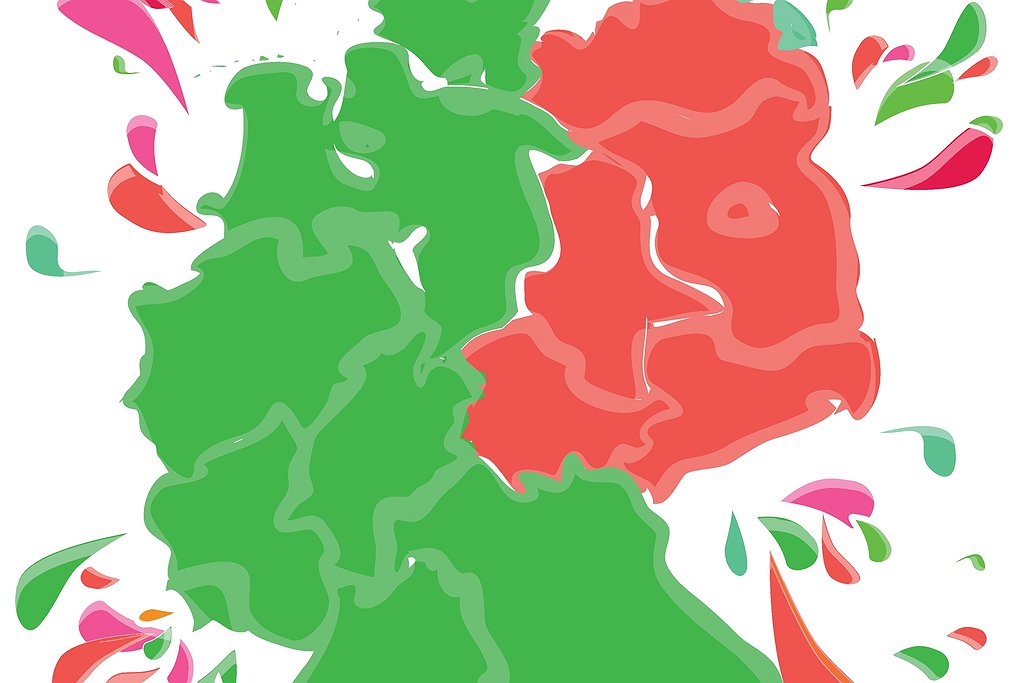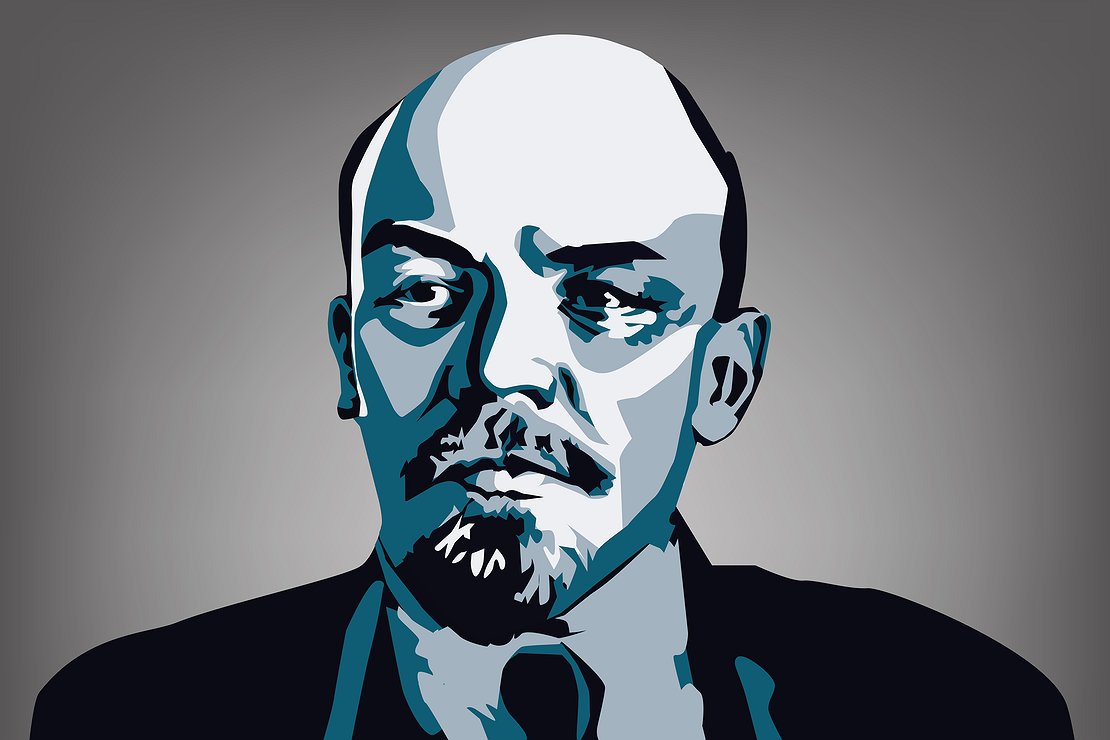
Significant disparities between the east and west of Germany:Why the East is Different
The state elections in Saxony and Brandenburg on September 1st have once again fueled the debate about the difference between the old (western) and new (eastern) German states. In their electoral behavior, the east Germans are more like the citizens of the Visegrád states than their west German compatriots. The partition of Germany has left its mark and has done so permanently. A good reason, 30 years after the fall of the Berlin Wall, to take stock and to examine the differences that have grown up over time between the western and eastern federal states. These differences also explain why political communication and strategies that work in east Germany do not work in the west, and vice versa.
The collapse of socialism in East Germany has led to radical breaks in employment histories, long-term unemployment and the loss of social status. The desire for material security is accordingly more pronounced than for ‘post-materialist’ leanings, as is the case in parts of west German affluent society.
In the Adenauer-Republic, the West Germans built up a high degree of trust in their state, which was also due, for example, to the ‘miracle’ that, despite the total collapse, even the civil servants' pensions continued to be paid out. Meanwhile, the East Germans lived for decades under a system whose existence was guaranteed only by the Soviet tanks and whose economy of scarcity was miles away from the socialist promises of salvation.
The East Germans learned over decades to mistrust their state's press and to read between the lines. The news in ‘Neues Deutschland’ and ‘Aktuelle Kamera’ were compared with the reports on West German television. The West Germans, on the other hand, for decades built up an allegiance to public television and their weekly and daily newspapers, and this is only slowly coming to an end with the advent of the new media.
With the peaceful revolution of 1989, East Germans realized that mass protests could bring a political system to its knees. In western democracies, demonstrations were always allowed, but for this very reason they were in most cases ineffective, such as the protests against the deployment of more medium range missiles in West Germany and against gay marriage in France, in which up to one million people took to the streets.
In the east of Germany, the proportion of the lower middle class is larger than in the west (of Germany). In the past one would have said: the ‘petty bourgeoisie’. In other words, citizens who pursue a profession, earn a living, but haven’t attained a high level of education. These lower income groups have achieved a modest standard of living, which is easily threatened by small additional burdens such as higher energy prices.
East Germany is the area with the largest proportion of confessing atheists in the whole world. In no other part of Europe, apart from the Czech Republic, is church membership lower. This means that the influence of the official churches on political attitudes, unlike in large parts of west Germany, tends toward zero. Moral teachings on the part of the official churches, and any attempt to make people feel guilty, are thus largely ineffectual.
Other powerful associations in west German society such as political parties, trade unions, employers' associations etc. also have low membership numbers in east Germany compared with the West and display a much lower degree of organisation. Their ability to influence society is therefore very limited.
In many of its regions, the east of Germany has a considerable surplus of men. Elsewhere in Europe, imbalances this big are found only in northern Scandinavia. Many women moved to the West after the fall of communism, whereas the men remained. This means that the men's vote carries more weight.
The transatlantic and (western) European sense of belonging is weak, where it exists at all. The strong emotional ties to the alliance with the US or the Franco-German friendship, which is of great importance to the west German elite, hardly resonate in east Germany.
As an ‘anti-fascist’ state, the citizens of the GDR saw themselves on the ‘right’ side of history. An assumption of ‘guilt’ for ‘fascism, imperialism and colonialism’, which had shaped Western discourses since the 1960s, was virtually excluded by definition, due to the class standpoint propagated by the SED.
Unlike Western Neomarxism, Soviet-style old Marxism did not question the existence of peoples and nations. In the GDR, for example, this was expressed in the cultivation of the ‘Weimar Classicism’ and the emphasis on ‘progressive’ national traditions from the peasant uprising via the Prussian reformers to the workers' movement. In the final phase of the GDR, it even invoked monarchical traditions, as in the films about ‘Saxony's Splendor and Prussia's Glory’ (‘Sachsens Glanz und Preußens Gloria’).
From the start, the GDR strongly relied on the full-time employment of women in production; it was precisely the proletarian ideal of gender equality that left little room for the development of bourgeois feminism or academic ideas of ‘gender diversity’, which had gained increasing importance in West Germany since the 1970s.
Contrary to the anti-bourgeois rhetoric of the GDR, a traditional bourgeois understanding of culture was preserved there. In painting, realism remained the predominant style, the bourgeois educational canon was simply supplemented by communist writers and artists such as Brecht and Maxim Gorki, and the traditional bourgeois understanding of art also remained predominant in theatre, opera and music.
The so-called ‘education revolution’, i.e. the broad-based academization, the expansion of universities and the enormous increase in the number of humanities and social science academics, which had shaped education policy and the labor market in West Germany since the 1960s, did not take place in the GDR. Education in the GDR remained vocation oriented. In academic education, the natural and engineering sciences dominated.
The psycho, esotericism and self-discovery wave that has swept over West Germany since the 1980s, with its new forms of communication (“I'm okay, you're okay”), anti-authoritarian experiments, anthroposophy, Far Eastern wisdom teachings, ‘new spirituality’ and so on, largely passed by unnoticed the petty bourgeois society of East Germany, with the exception of some very small communities, so that overall in East Germany a sober style of thinking and in part a rougher tone of conversation has been maintained.
Despite all the anti-militaristic rhetoric, a mass pacifist movement, comparable to that in West Germany, never prevailed in the GDR. For the GDR, Lenin's sentence applied: “Pacifism is good – in other countries.” Service in the armed forces and the police force was well-thought of. An aversion to everything military, to uniforms and national defense in general, as is customary in wide circles of west Germany, never prevailed in the east.
In contrast to the east, west German society has experienced several major waves of immigration since the 1960s. Over the decades, west Germans have become accustomed to the existence of parallel societies and to living with the negative consequences, ignoring them, blocking them out or circumventing them through adaptation. Most people can hardly remember the time before this development, which is why in west Germany, events that trigger a culture shock in the east are often accompanied only by a tired shrug of the shoulders.
Translated from eigentümlich frei, where the original article was published on September 7th 2019.




